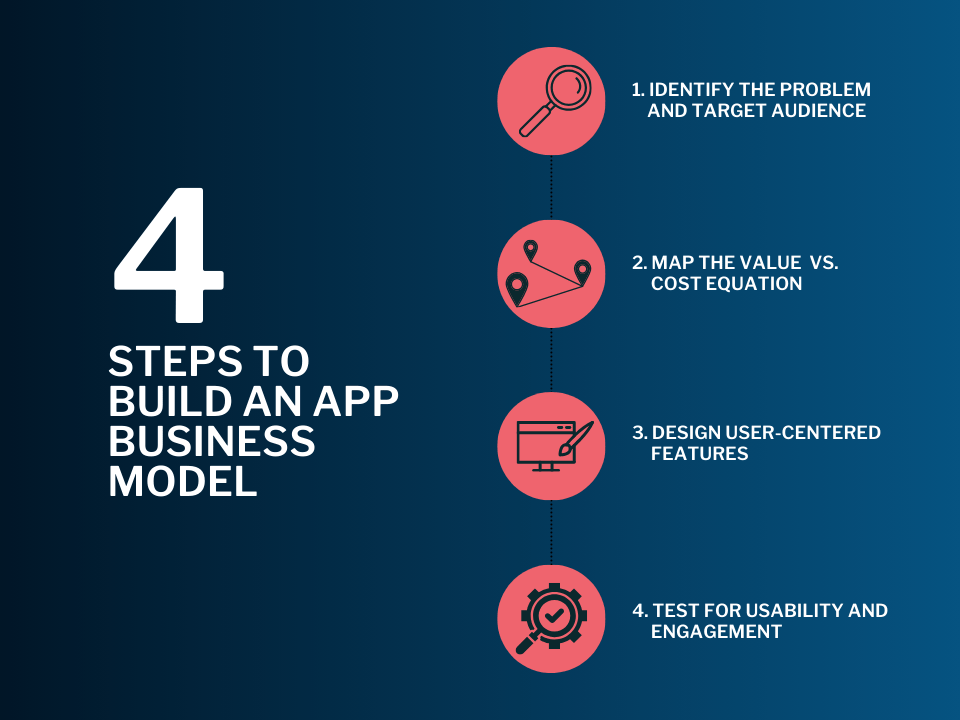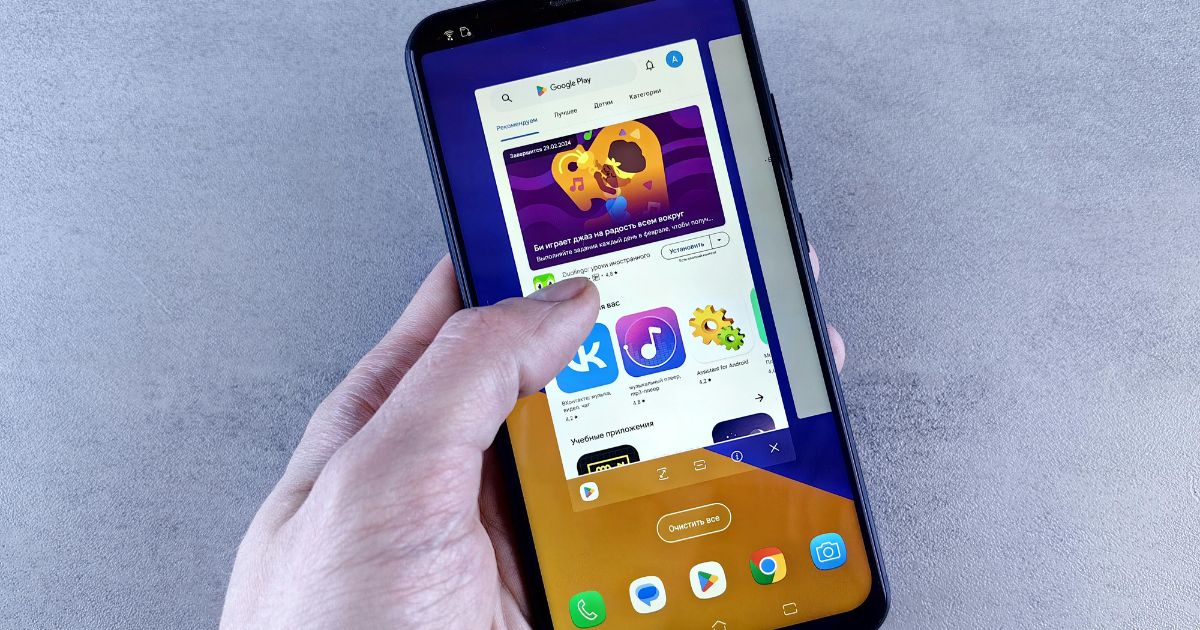The app market has grown rapidly in recent years, making it more crowded than ever. Thousands of apps are released every month, and many are built quickly using no-code platforms or AI tools. While these apps may function, they often fail to provide lasting value or engage users in meaningful ways.
What sets the most successful apps apart is their ability to combine clear value, thoughtful design, and human connection. These apps do more than solve a problem; they create experiences that users enjoy and trust.
At the heart of this success is a return to the fundamentals of business. By focusing on high-quality basics and applying business 101 principles, developers can build apps that not only meet user needs but also achieve sustainable growth and loyalty.
This article explores how strong business models are the key to creating apps that truly succeed.
The App Development Business Model Explained
An app business model is a plan that indicates how an application creates value for users while generating revenue for the business. It is the foundation of every successful app, because even the best idea will not last without a clear path to sustainability.
A strong model balances three key elements:
- Value
- Cost
- User satisfaction
The most successful apps provide solutions with a worth that feels greater than what users pay, whether through subscriptions, purchases, or ads. When an app delivers clear benefits at a fair price and makes life easier, users are not only willing to pay but are also more likely to stay engaged. This balance is what transforms an app from a simple product into a long-term business asset.
By focusing on value and user experience first, companies can build apps that both serve their audience and drive sustainable growth.
The 7 Types of Business Models for Apps
Choosing the right monetization model is one of the most important decisions in app development. The model determines how revenue will be generated and how the app will provide value to both users and the business. The best fit depends on factors such as the target audience, the type of problem being solved, and how often users are likely to engage with the app. A well-chosen model should align with the user experience rather than disrupt it, while also ensuring that the business can scale over time.
Here are the most common monetization approaches used in successful apps.
- Paid apps: Users pay a one-time, upfront fee to download and use the app. This model works best when the app offers a unique feature or solves a problem in a way that clearly justifies the price. It provides immediate revenue but requires strong marketing and user trust to succeed.
- Freemium model: The app is free to download, but premium features, advanced tools, or additional content are locked behind payment. The concept is to attract a large user base with free access, then convert a portion of those users into paying customers once they see the value of upgrading.
- Subscription model: Users pay a recurring fee, often monthly or annually, to access the app’s services. This model provides predictable revenue and works well for apps that deliver ongoing value, such as streaming platforms, productivity tools, or fitness apps.
- In-app purchases: The app is free or low-cost, and users can buy extras within the app, such as virtual goods, additional lives, or advanced features. This model is common in mobile games and lifestyle apps, where purchases enhance the user experience without being mandatory.
- Advertising model: The app generates revenue by showing ads to users. It works well when there is a large, engaged user base and the app is designed to keep people coming back frequently. The key is balancing ad placements so they do not disrupt the experience.
- Affiliate/referral model: The app earns commission by promoting third-party products or services and driving sales or sign-ups. This model is common in comparison apps, shopping platforms, or apps with niche audiences that trust recommendations.
- Transaction fee/commission model: The app takes a percentage of each transaction made through its platform, such as marketplace or booking apps. The concept is simple: the more successful the users are in completing transactions, the more revenue the app generates.
App Monetization Business Models: Adding Value Beyond the Price
When it comes to monetizing apps, businesses need to remember one simple principle: the value must outweigh cost. This is business 101 and it applies just as much in the digital world as it does in any other industry. An app will only succeed if the problem it solves is worth more than the subscription or fee being charged.
For example, if a business pays $100 per month for an app but that app helps them save $500 in expenses or generate $200 in new revenue, the decision is a clear win. The cost is not seen as an expense but rather as an investment that delivers measurable returns. This is the mindset that drives long-term adoption and loyalty.
Apps that create a strong return on investment stand out because they move beyond being ‘nice to have’ tools. They become essential solutions on which users depend to achieve real outcomes, whether that means hitting revenue goals faster, saving time on daily tasks, or streamlining operations. The moment users see tangible results that justify their spend, they are far more willing to pay and even advocate for the app to others.
The most successful apps are not the ones that focus only on quick revenue but those that provide clear, lasting value. By solving problems in a way that feels more valuable than the price tag, businesses build trust, improve user satisfaction, and secure sustainable growth through their app monetization strategy.
How Do Applications Make Money in the Real World?
Short-term, cash-grab apps often rely on quick bursts of popularity or aggressive tactics to make money, but they rarely keep users engaged for long. A well-known example is Flappy Bird, which rose to the top of the App Store in 2014 and reportedly earned up to $50 000 a day through in-app ads. Despite its financial success, the game was pulled by its developer after only a few months, partly because of concerns about its addictive nature.
This highlights how apps designed for fast returns can struggle to build lasting value or trust. Many hyper-casual games take a similar approach, relying on repetitive mechanics and heavy ad placement, which often diminishes the overall user experience.
By contrast, apps that focus on long-term growth are designed to provide sustained value and build loyalty. Candy Crush Saga is a strong example, remaining one of the top-grossing apps years after its launch. It combines in-app purchases with optional ads, giving users choices while continuing to generate significant revenue. Another is Clash of Clans, which built a dedicated community around persistent gameplay and user collaboration. This strategy encouraged long-term engagement and steady in-game purchases, resulting in consistent revenue growth.
The difference comes down to strategy. Short-term models may achieve sudden financial gains, but long-term success comes from balancing monetization with real value, trust, and user satisfaction.
Human-Centered App Development vs No-Code/AI Solutions
In recent years, no-code platforms and AI-generated apps have made it possible for almost anyone to create an app quickly and without deep technical knowledge. No-code development platforms or AI tools (such as ChatGPT and Claude) can generate functional apps, guides, or interfaces with minimal effort. These tools are appealing because they reduce development time and costs. However, users are often able to spot the difference between apps built this way and those that are carefully crafted by experienced developers.
The distinction lies in quality, attention to detail, and the human touch. An app built quickly using no-code or AI solutions may function correctly, but it often lacks the subtle refinements that make an app feel intuitive, relatable, and enjoyable to use. Users can sense when an app has been designed without an understanding of real-life behavior, needs, or context.
A helpful analogy is comparing ChatGPT writing a guide on how to ride a bike to a professional cyclist teaching the same skill. ChatGPT can provide accurate instructions, but it cannot share personal tips learnt from experience, anticipate common mistakes, or adapt explanations to individual learners. Similarly, custom-built apps benefit from human experience. Developers consider small details, like user flow, aesthetics, timing, and interactions, that enhance engagement and connection.
Human-centered apps foster real connection between users and the product. They feel tailored to the user, anticipate needs, and respond to human behavior in ways that AI or no-code apps cannot replicate. By prioritizing creativity, empathy, and nuanced understanding, custom-built apps not only solve problems effectively but also strengthen trust and loyalty. Users are drawn to these apps because they provide value, feel intuitive, and deliver experiences that resonate on a personal level.
How to Build a Business Model for an App That Lasts
Creating a business model for an app that stands the test of time starts with a clear understanding of what users truly need. Beyond features or flashy design, a successful app delivers solutions that are meaningful, practical, and relevant. The most effective apps provide benefits that outweigh their cost, making every interaction feel valuable to the user. This is not just about pricing; it is about ensuring the app genuinely improves users’ lives, whether by saving time, simplifying tasks, or solving a pressing problem.
Equally important is the relationship between the app and its users. Apps that foster connection through intuitive design, thoughtful features, and a user experience tailored to real human behavior, build trust and loyalty. When users feel seen and supported, they are more likely to engage consistently, share the app with others, and invest in its services over the long term. Understanding these core principles lays the foundation for the key steps in building a strong, lasting app business model.
AppIt follows a clear approach when building app business models to ensure long-term success.
- Identifying the problem and target audience: understanding the specific challenges users face and who will benefit most from the app allows the team to focus on delivering solutions that truly matter. This step involves market research, user interviews, and competitor analysis to identify gaps and opportunities.
- Mapping the value versus cost equation: this step involves analyzing how the app’s features translate into measurable benefits for users. The goal is to ensure the perceived value significantly exceeds the cost, which supports pricing strategies that feel fair and justify ongoing investment.
- Designing user-centered features: every element of the app, from navigation to visual design to interactive tools, is crafted with the user in mind. Features are prioritized based on their ability to solve real problems, improve usability, and enhance the overall experience, creating an app that is both functional and enjoyable.
- Testing for usability and engagement: iterative testing with real users helps identify areas for improvement and ensures that the app meets user needs effectively. Feedback is used to refine functionality, optimize interactions, and increase satisfaction, ensuring the app remains relevant and valuable over time.

Back to Basics: Business 101 for App Success
The business basics of successful apps start with focusing on high-quality fundamentals. In a crowded market, it is easy to get caught up in adding every feature or chasing the latest trends. Stripping away the noise allows developers to concentrate on what truly matters: solving real problems, delivering value, and creating a seamless user experience.
The most successful apps are not necessarily the most complex. Instead, they are the ones that provide clear, meaningful benefits to users while remaining intuitive and easy to navigate.
Human connection, creativity, and thoughtful design give apps a competitive advantage by making them engaging, relatable, and enjoyable to use. Apps that resonate on a personal level foster loyalty and long-term growth.
For businesses looking to build an app that truly stands out and delivers lasting value, contact AppIt today for custom app development tailored to your users and your goals.







